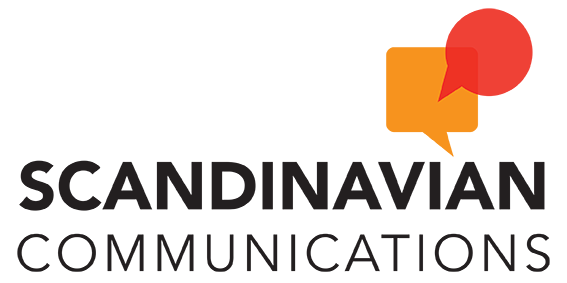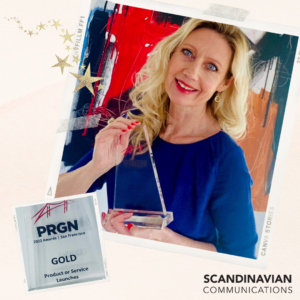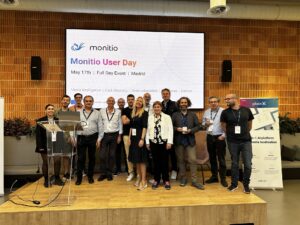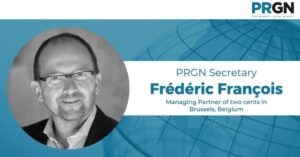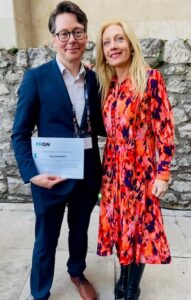How can you boost your communications productivity with digital PR tools? Julie Osborne from Scandinavian Communication’s Public Relations Global Network partner Roop & Co. shares her top five tools.

By Julie Osborne, Account Supervisor – Roop & Co.
In the ever-dynamic world of public relations, we all know that there are many hats to be worn, various tasks to be juggled and conflicting deadlines to be met. Without the ease and convenience of digital PR tools, your competitors will beat you to the punch every time. But by building a robust arsenal of the right PR tools, you will ultimately empower your communications team to not only be more productive and efficient, but garner more effective results.
Here are five key digital PR tools and apps to introduce to your communications team in 2023:
1. PR Monitoring & Analysis Tools
Media monitoring and analysis is an essential part of any communications toolkit. To implement an effective public relations strategy, your communications team must be able to easily track important information such as brand sentiment and engagement, media mentions, industry news and trends, and competitor analysis. The ever-evolving nature of social media, in particular, has afforded the public immense power over brands’ reputations—in turn only adding to the crucial role of media monitoring in PR.
Popular examples of these tools include Meltwater, Agility PR and Brandwatch. From optimizing your media pitching process and tracking media coverage in real time to exploring industry trends to leverage for potential story angles, media monitoring and analysis tools offer a variety of capabilities. Your individual priorities and needs will greatly influence which specific features are necessary.
2. Project Management Software
Public relations professionals are working within an increasingly digital landscape and are serving a wide variety of stakeholders. They’re also often working on multiple projects, along with the many tasks that fall under each of those projects.
In this kind of fast-paced, dynamic environment, a shared digital platform for project management is absolutely critical. Having this tool will enable your communications team to effectively track everything from general task status and project timelines, to PR campaign development and media outreach.
Choosing the right project management software for your team will require considering factors such as the size and budget of your organization, as well as which system and features are going to be the best fit for your team. A few well-known examples of these tools include Basecamp, Asana and Monday.
3. AI-Powered PR Tools
Exploding seemingly overnight in the communications field earlier this year, AI-powered tools offer a wide variety of potential applications—including many that are highly relevant to PR work. ChatGPT, for example, has the capability to rapidly generate text based on specific prompts. As a result, it can not only be used for drafting items such as press releases or articles, but can also assist in the research and editing stages.
With its ability to process language, it can even produce content that is customized for specific audiences—a particularly important feature for PR professionals. However, keep in mind that any AI-generated content should only be considered a first draft and will need to be thoroughly reviewed, fact checked and polished.
It’s also important to note that, while still rapidly evolving, AI-powered tools will completely revolutionize the PR industry in the years to come. Although certainly powerful on their own, they work best when used strategically by experienced communicators who know how to write effective prompts and can weave in the human element of storytelling. While there are new AI-powered PR tools popping up every day, a few popular examples include Determ, Jasper and Sprinklr.
4. Marketing Automation Platforms
By streamlining and automating numerous PR activities, marketing automation platforms like HubSpot, SharpSpring and Marketo can help with many aspects of your communications team’s work—from social media and digital advertising, to lead generation and email marketing. They can even help with overall PR campaign implementation and measurement.
By bringing a variety of marketing assets under a single platform, marketing automation enables smoother and more efficient processes—ultimately enhancing the customer experience. In many cases, these tools can even be integrated with other marketing platforms such as customer relationship management (CRM) software, social media management tools and account-based marketing (ABM) orchestration platforms.
5. News Aggregator Sites
News aggregator sites can act as tools to help your communications team stay on top of emerging news in a highly efficient and effective way. They provide you with relevant articles and content as well as timely updates. AP News, Feedly and Google News are a few examples you can consider leveraging as your news aggregator tool.
Users can customize their feeds to track the news content that they want to see—whether that be national news or specific industry news. This way, users can view only the content that is relevant to them without getting inundated with unnecessary information. Because these tools sort through and filter all news, users get quality sources and content all in one convenient location.
Each of the described digital PR tools offers its own way to help your communications team do great work.
Read the full article here

